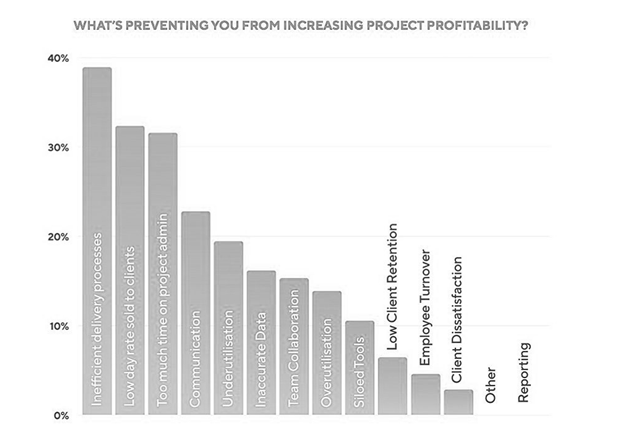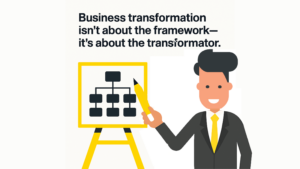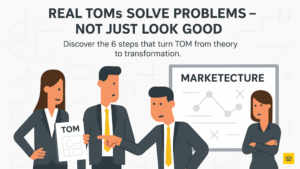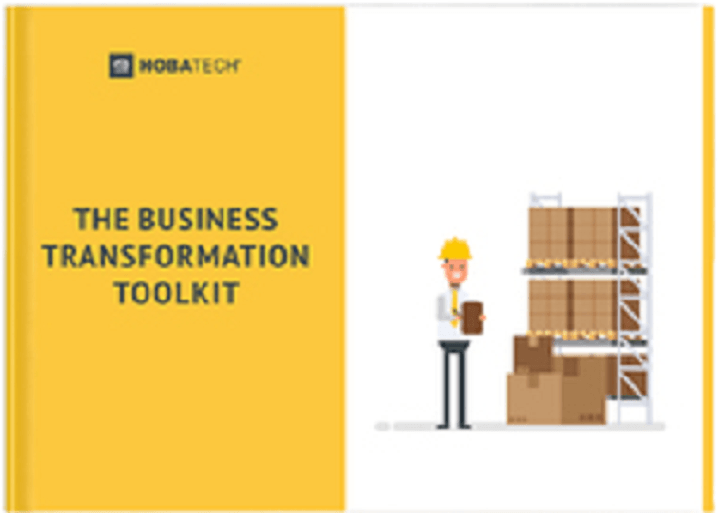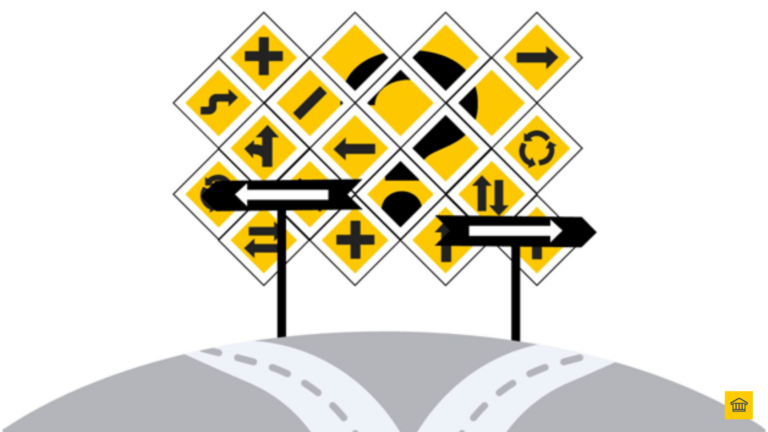From the Client-side, a project fails when it does not deliver the results or is unable to meet the ROI targets within the given time and budget. Using these two elements (realized results, and financial return), stakeholders often decide whether the project was a success or failure.
But what about from the Consultant or Consultancy’s side? What does the success or failure of a project look like for a consultant or consultancy?
If you’re a consultant(internal or external), a Company or Consultancy, then this post is for you. In this post, we’re going to discuss the 5 keys that prevent project delivery profitability, and how HOBA® addresses each one, so you stay in the black (and not the red)!
Why is Project Profitability important?
As a consultant or consultancy, project profitability is important because that’s how you make money. If you run your projects for clients, and you run at a loss, you wouldn’t be able to do that for too much longer, the only way you can stay in business is if you deliver efficiently. And if you weren’t, you would need to transform.
So, why should organizations pay attention to the causes that prevent meeting or increasing profitability and take measures to address them as part of delivering business transformation projects for your clients?
What the research says
According to research by Consultancy UK (https://www.consultancy.uk/), just 9% of the agency leaders claim that they are nailing project profitability, and that’s not quite exciting!
Before getting into the details of the research, let’s first explore why we should trust in the research in the first place?
Who are they and why do we trust them?
Consultancy.uk is UK’s leading advisory and consulting agency that’s an industry expert which presents the latest news and trends in developments and publications of consulting firms across 60+ industries and functional areas. It provides an overview of professionals interested in working in consultancy. It is part of the Consultancy.org family that receives 4 million visitors per year.
5 Key Points that Prevent Project Profitability
So, if you want to learn the factors that prevent increasing project profitability and how HOBA helps with that, keep reading.
When you work with a dedicated team, you are better able to figure out what works for you the best.
Heath Gascoigne Tweet
Factors that Prevent Project Profitability
First, we will explore the 5 factors that prevent project profitability then we will show you how to address them.
1. Inefficient delivery processes
The main cause of the inefficient delivery process is poor project workflow, irrespective of whether organizations use agile or water project methodologies.
Organizations might not realize the cost involved because of the inefficient delivery process, so our challenge to them is ‘can you measure it, and if not, why not?’
So, what causes inefficient project delivery? Here are the top four (4) causes:
- Engaging only part of the client organization (when others should also be involved), which leads to.
- Missing information which includes incomplete project details, stakeholders, and requirements,
- Highly manual data (and requirements) collection, extraction, validation, verification, and tracking, and
- Unplanned project scope changes that impact both the budget and schedule
2. Too much time spend on project admin

67% of agencies having 100-199 employees claim that client management takes most of their time as a result organizations experience:
- Lack of creativity
- High staff turnover
- Staff burnout
3. Communication Gap
Poor communication is one of the major causes of project failure, as well as profitability. As a result, the project staff try to impose their project terms or the technical language on the Business and hope that the project will be successful, which is entirely wrong. This leads to the following problems:
- 1 out of 3 transformations fail due to a communication gap
- 56% of the money spent on transformationsare lost attributable to ineffective communication
- Lack of communication between the various levels of the organization from senior leadership to the operational team results in the poor definition of the roles and responsibilities
As a consultant you know feedback is key. You have to connect with stakeholders and facilitate meaningful collaboration.
Heath Gascoigne Tweet
4. Lack of Team collaboration
Team collaboration prevents micro-management (which is a wanted outcome) but in the absence of good team collaboration, this results in poor decisions that lead to project failure. This ultimately results in:
- Lack of trust
- Poor team relationships
- Siloed teams and projects (and sharing of knowledge and resources)
5. Underutilization of the resources
It is detrimental to your organization because underutilization generates inefficient results, which results in the project failure. It also causes:
- Higher costs (on the same revenue)
- Lower employee morale
- Low productivity
How does HOBA help you address the problems?
Solution no. 1 - Ensure Efficient Delivery Processes Head-On
HOBA addresses this issue head-on. HOBA® is the framework that ensures you do all the right things and only the right things. The Design Process ensures that you also do them in the right order.
The first step is to get everyone on the same page, a shared purpose and build the collaboration and teamwork. This is achieved by defining the Vision, but not just a 20-foot Vision Statement, that is so lofty it means nothing. A Vision statement that is articulated down into its Strategies (how the Vision will be achieved), is Objectives (of each strategy), and Measure (of success of each Objective). This addresses the WIIFM (What’sIn It For Me) question – both the Business has in this mind, and the project team, to support them in their activities they do, should be all in service of this Vision – the number One requirement on the transformation.
This is the starting point to the project’s success which allows for better communication and stakeholder engagement. A clear Vision (Strategy, Objectives & Measure) enables a greater level of collaboration between the program team, and ultimately the organization, taking them along the transformation journey together.
Solution no. 2 - HOBA’s Design Strategy Helps to Overcome Admin
As project consultants, with HOBA®, the framework provides the process and structure which that enables all the requirements to be documented, work started and worked completed quicker. As a result, the Business Architect (we call Business Transformators) and the team can spend more time doing the ‘doing’ work and less time on the planning (and admin) work. Together, it increases the pace of work getting picked up, started, and completed.
When your organization has the framework in place it allows the team to get started on ‘doing’ and completing the project (as opposed to spending a lot of the time planning and describing what work needs to be done, which is typical whether its Waterfall or Agile documentation). As a result, the Business Architect and the team will be able to deliver requirements more frequently, at a regular frequency or ‘rhythm.’
Here’s what the process looks like,
- Use HOBA® as the starting point of the complete set of Building Blocks and Blueprints that User Story requirements are elaborated from and captured on a Story Card.
- Work with the Scrum Team and Product Owner and identify and agree on the User Stories (and Acceptance Criteria) for each User Story.
Solution no. 3 - HOBA’s 3 Tier Governance Improves Communication
HOBA® encourages each stakeholder for better results, that include program or project people, business stakeholders, customer and end-user, business, data, and system analysts, and many more.
At HOBA®, we use a 3-tier governance structure that enables better collaboration and communication from the project to program to portfolio level, making sure changes identified at the project and operations level, are visible, supported and agreed at portfolio level. This also ensures key stakeholder voices up and down the organisation isheard and ensures all stakeholder concerns are addressed and represented on any decision or design boards.
We believe that bringing all the stakeholders along the transformation journey is the key to transformation project success. In order to do that, you have to make sure their needs and concerns are addressed, from the very beginning (to the very end).
Solution no. 4 - Encourage Team Collaboration with our Governance Reference Model
The project success is never based on one person or a team of people, rather “transformation is everyone’s business”. We encourage organizations to follow the HOBA® Governance reference model for better team collaboration.
HOBA® helps organizations strengthen and encourage team collaboration. One of the common mistakes that projects and teams make is, they don’t really or actually follow any Governance, or Governance reference model nor related blocks and blueprints.
In terms of RAIDs, and managing Risks, they will have one ‘risk meeting’ at the start of the project, it will last 2+ hours, team members will ‘dump’ all the known (and theorized ‘unknown’ risks they could ever think of) in the RAIDs log, and ‘hope’ they will never hear about it again, satisfied they ‘have recorded’ the Risk in the Risk Register, it is now “managed”. That is not “managing” anything that is actually “recording” risks.
To effectively and properly manage RAIDs, you need to build RAIDs management into the daily routine, which HOBA® does. If you don’t actively manage RAIDs, you are not actively managing anything, and don’t be surprised when those ‘risks’ that weren’t managed, now become ‘issues’ that take more than the 2hrs you ‘lost’ to address them.
HOBA® encourages RAID management as part of the scrum. As HOBA® is based on Agile Scrum, teams members lead by the Scrum Master, during their daily Scrums (15-minute stand-up meetings, first thing every morning), each team members will report (1) ‘what they did (yesterday), (2) what they plan to do (today), and (3) what could impede them doing (2) today?’, where risks become part of (3) so that the risks are visible and actually managed.
Solution no. 5 - Optimal Utilization of the Resources at All Levels
Optimal utilization of the resources is only possible when each team operates in the optimal capacity.
At HOBA® we understand and appreciate there are different layers within the organization i.e., strategic, operation, and project (implementation). Each stage has its specific significance and the unique language that you need to understand.
At the strategic level are the C-suite, executive management, and leadership teams and members. Their focus is on improving revenue, profits and ROI, and market share. At the operational level, you have the customer-facing business and supporting business units i.e., sales and marketing, IT, HR, number of calls/complaints, milestones etc. At the implementation level is the program and project team that manage and implement change with and for the business.
For the success of your project profitability, you have to consider the size of the organization, because you have to use the right tools, right people, and right skills. That is – you put the rightly qualified and skilled person to the task, and not an expensive resource for a low-cost task for example. This will ensure you don’t over-commit time, budget nor resources and improve project success and profitability.
HOBA® business transformation framework and design process focus on optimal utilization of the resources at all levels. The transformation framework and design process are intentionally structured so that 3-Ls – Layers, Language, and Level (of detail) from the strategic, operational and implementation layer, you are speaking their language, to the level of detail they need, so communication is clear, unambiguous, timely and to-the-point (there is no wastage of time or resources seeking clarifications, because it was clear and unambiguous from the beginning), all the decisions are taken on the right level in a language and a level of detail they understand, the project runs from the beginning and completes with success, on time, budget and quality.
HOBA TECH Ensures Project Profitability
We believe the project profitability requires strategic planning and implementation. The Design Process and HOBA® does that in the most efficient way.
We’re always excited to help organizations have successful projects. If you are concerned about the project that you‘ve launched or need help starting, reach out to us, contact a member of the HOBA TECH team or use the Contact Us form.
Thank you for reading this!



